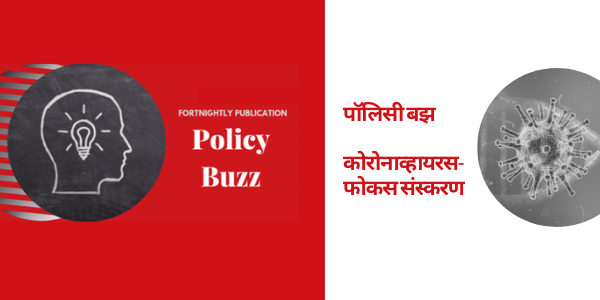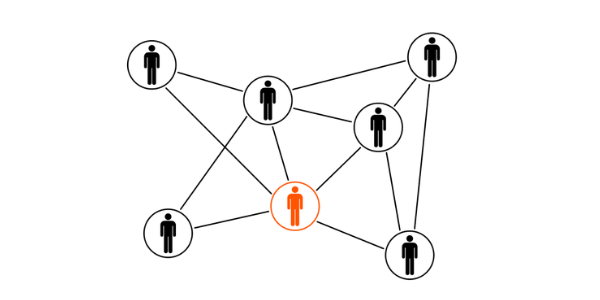Researchers at the Accountability Initiative, Centre for Policy Research and the International Food Policy Research Institute (IFPRI) have published a Policy Note which estimates the potential costs to deliver a core set of direct nutrition interventions (DNIs) at scale (i.e. 100 per cent coverage) for the fiscal year (FY) 2019-20.
Background to the note
Outcomes of malnutrition such as stunting, anaemia, wasting, and low birth weight have remained persistently high in India (Menon et al. 2017). As part of India’s national strategy to address malnutrition and associated risks, a number of nutrition interventions are being implemented. These include nutrition-specific interventions such as the provision of food supplements, Iron and Folic Acid (IFA) supplementation during pregnancy, breastfeeding (BF) promotion, vitamin A supplementation in early childhood, and food supplementation, as well as nutrition sensitive interventions such as access to clean water, sanitation, etc.
At the Union government level, these interventions are delivered primarily through Centrally Sponsored Schemes (CSSs) – the Integrated Child Development Services (ICDS), POSHAN Abhiyaan, and the Pradhan Mantri Matru Vandana Yojana (PMMVY) under the Ministry of Women and Child Department (MWCD) and the National Health Mission (NHM) operating within the Ministry of Health and Family Welfare (MoHFW).
Despite these interventions, coverage remains variable, due to implementation challenges, and capacity, and financing gaps (Menon et al. 2017, Chakrabarti et al. 2019). Although overall use had improved and reached marginalised groups such as disadvantaged castes and tribes, the poorest quintiles of the population were still left behind, especially in the largest states that carry the highest burden of undernutrition.
This Policy Note is based on a study that carried forward research on costing for nutrition interventions, notably work by Menon et al. (2016). The methods followed by Menon et al. (2016) were adapted in this policy note to calculate the cost of providing interventions at full coverage.
₹20,796 crore ($3.03 billion) was required to provide food supplements at-scale for for adolescent girls out-of-school, pregnant women, lactating mothers, children aged 6 months to 3 years, and severely underweight children
How can this note be used?
The costs provided here can be used by policy-makers for planning and budgeting. The objective of budgeting is to estimate revenues required and likely expenditures, as well as to determine future funding needs. Due to the COVID-19 pandemic, resources have to be rapidly re-prioritised. The findings from this note can facilitate such discussions as well. Cost estimates can contribute to a more informed debate on resource allocation priorities (WHO, 2003), and help make choices clearer for policymakers.
Therefore, the findings of this note can feed directly into the planning and budgeting cycle. The cost estimates across interventions for each state can be used at the ICDS Annual Programme Implementation Plan meetings, NHM Programme Implementation Plan meetings, planning for supplementary budgets especially under NHM, as well as in planning governance reforms across sectors to improve implementation. These meetings will be crucial in re-allocating funds in July 2020, accounting for COVID-19. Therefore, the findings of this note can equip various stakeholders with the required information to ensure adequate financing for nutrition interventions.
Findings
The study found that at 2019 population estimates, India should have spent at least ₹38,571 crore in 2019-20, across Union and State governments, and across ministries and departments to fully finance a set of core DNIs, at scale.
We estimated that in FY 2019-20:
- To deliver counselling at scale, ₹1,373 crore ($200 million) was required (Figure 1). This included counselling for the promotion of breastfeeding, complementary feeding, and water, hygiene and sanitation practices. Of all categories, Behavior Change Communication (BCC) interventions were the least costly.
- To provide food supplements at scale, ₹20,796 crore ($3.03 billion) was required. This included supplementary food for adolescent girls out-of-school, pregnant women, lactating mothers, children aged 6 months to 3 years, and additional rations for severely underweight children.
- For maternity benefit cash transfers at scale, ₹9,260 crore ($1.35 billion) was required. It was to be delivered under two conditional cash transfer schemes – PMMVY (₹6,637 crore) and Janani Suraksha Yojana (JSY) (₹2,623 crore).
- For the distribution of micronutrient supplements and deworming tablets at scale, ₹1,019 crore ($148 million) was required. This included IFA and deworming for adolescent girls, pregnant women, and lactating mothers; deworming for pregnant women; vitamin A, IFA, zinc, and deworming for children.
- For health interventions at scale, ₹6,123 crore ($892 million) was required. This included immunisation of children (₹3,542 crore), providing insecticide treated bed nets to pregnant women (₹146 crore), treatment of severely malnourished children at Nutrition Rehabilitation Centres (NRC) (₹2,403 crore), and drugs for treatment of diarrhoea for children (₹31 crore). A detailed breakup of these costs by intervention is given in Figure 1.
Figure 1: Annual costs of delivering nutrition interventions at scale, in ₹ crore

In the context of the current COVID-19 pandemic and economic crisis, it is critical to ensure equitable and adequate resources for nutrition. Union government and ministries are likely to reassess allocation requirements in the coming months. Our findings indicate that India should have spent at least ₹38,571 crore in 2019-20, and it is imperative that in 2020-21 and beyond, spending on nutrition will need to be benchmarked at least at this level, or beyond.
References
Chakrabarti, S., Raghunathan, K., Alderman, H., Menon, P., and Nguyen, P. 2019. India’s Integrated Child Development Services programme; equity and extent of coverage in 2006 and 2016. Bulletin of the World Health Organization.
Menon, P., McDonald, C.M., and Chakrabarti, S. 2016. Estimating the cost of delivering direct nutrition interventions at scale: national and subnational level insights from India. Maternal and Child Nutrition (Supplement 1): 169–85.
Menon, P., Nguyen, P.H., Mani, S., Kohli, N., Avula, R., and Tran, L.M.. 2017. Trends in Nutrition Outcomes, Determinants, and Interventions in India (2006–2016). POSHAN Report 10. International Food Policy Research Institute, New Delhi.
WHO. 2003. Making choices in health: WHO guide to cost-effectiveness analysis. Geneva: World Health Organization.
Also Read: Nutrition CSS schemes in a Glance from Accountability Initiative’s Budget Briefs











